Kentucky closer to U.S. in economic measures than decades ago, but gaps remain
When Congress established the Appalachian Regional Commission (ARC) in 1965, the idea was to improve the economy in the region and help it achieve economic parity with the rest of the nation.
The 1965 act declared that the region had abundant natural resources and rich potential, but “lags behind the rest of the Nation in its economic growth and that its people have not shared properly in the Nation’s prosperity.”
Since then, the ARC has spent $4.5 billion on economic-development projects in the 13-state region, much of it for infrastructure.
The spending on projects for Kentucky — either solely in the state or for multi-state projects that benefited Kentucky — totaled more than $486 million in just the last 20 years, according to Kathryn Whiteman, a program analyst with ARC.
The gaps in economic and education measures between Eastern Kentucky and the rest of the U.S. have narrowed since the mid-1960s, but the region hasn’t drawn completely even.
There is a relative lack of good-paying jobs, as well as losses in coal and other sectors, though poverty was relatively high even before most coal jobs disappeared. Poor funding for schools through much of the 20th Century helps explain the lag in some education measures.
Here are some maps from the most recent edition of the ARC Chartbook, a compilation of data covering 2017 to 2021, on some of those measures.
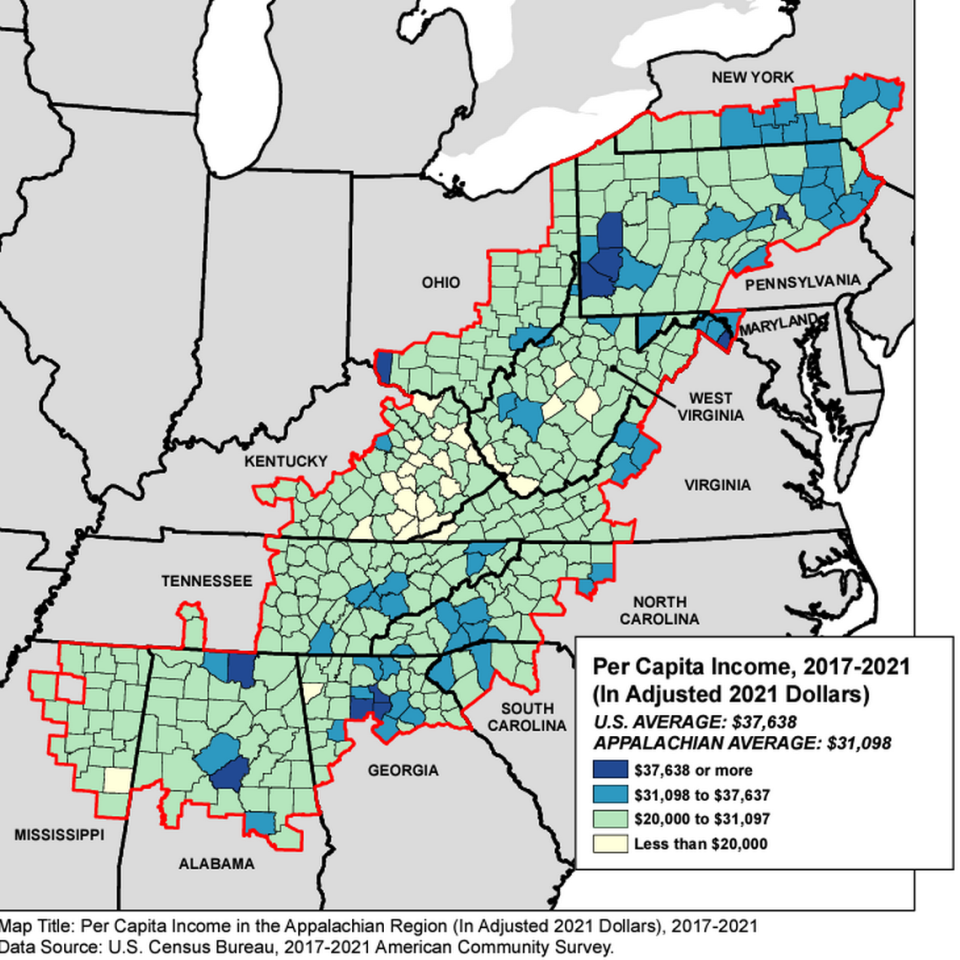
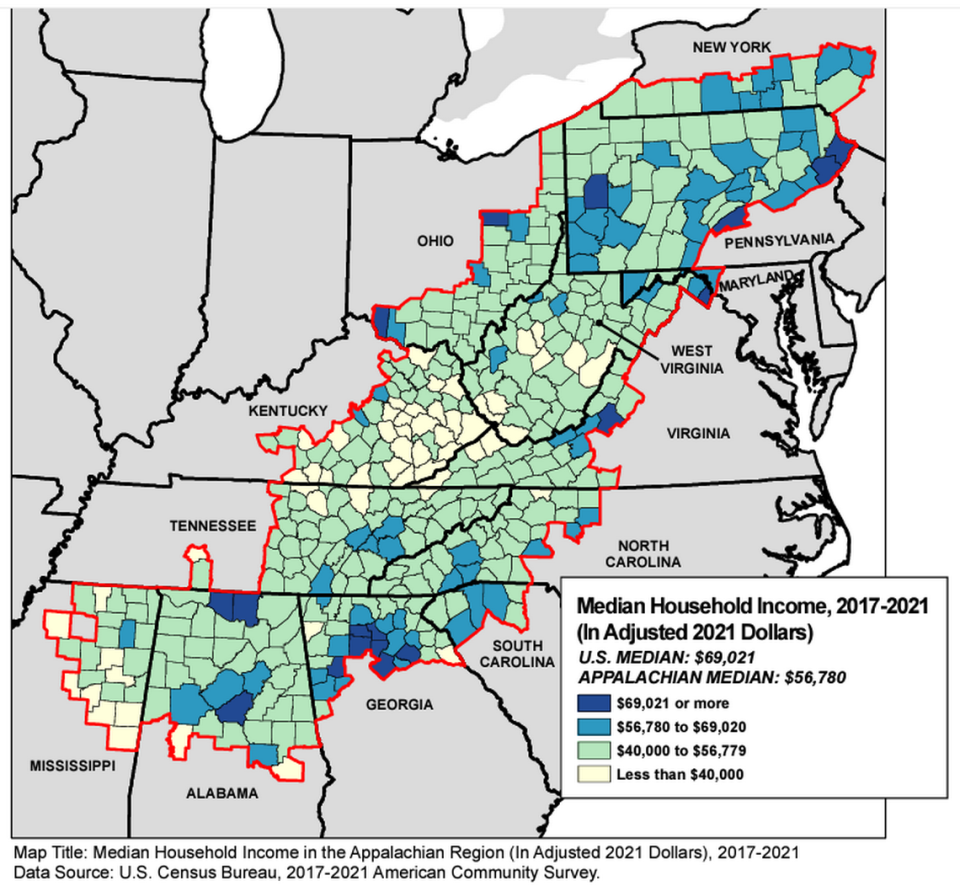
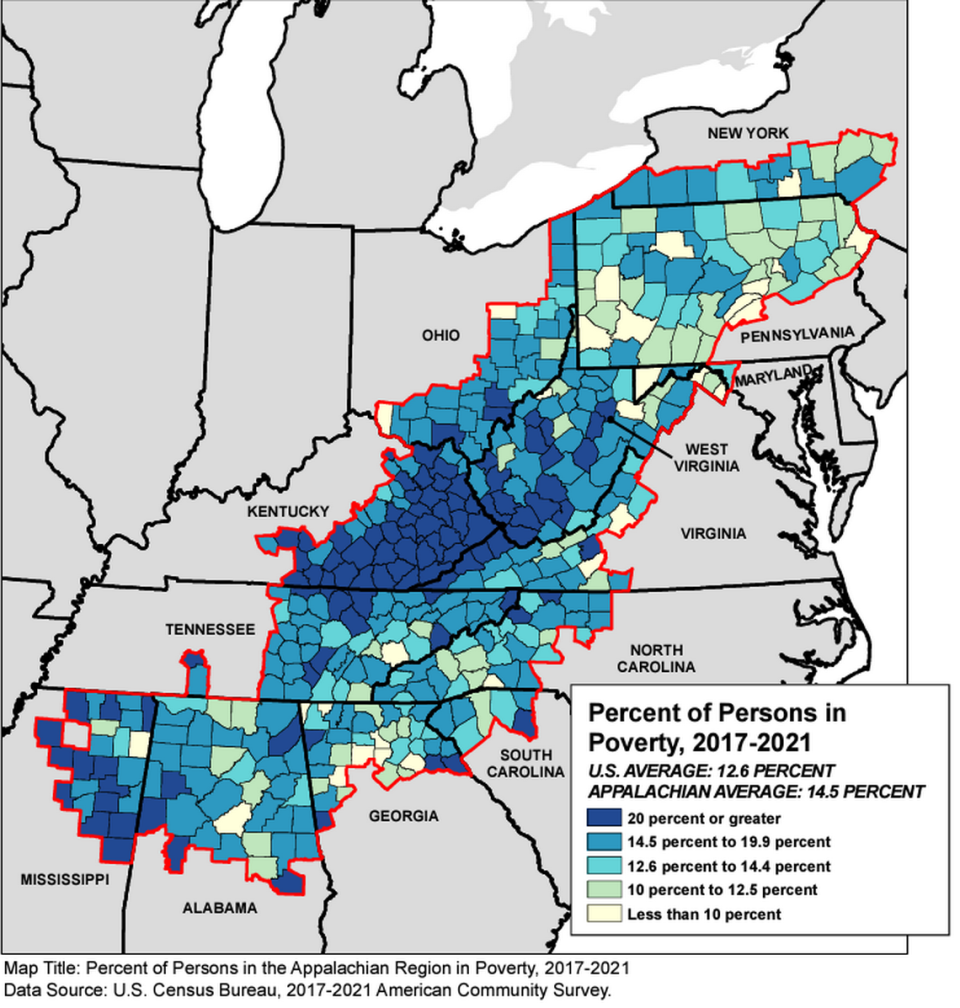
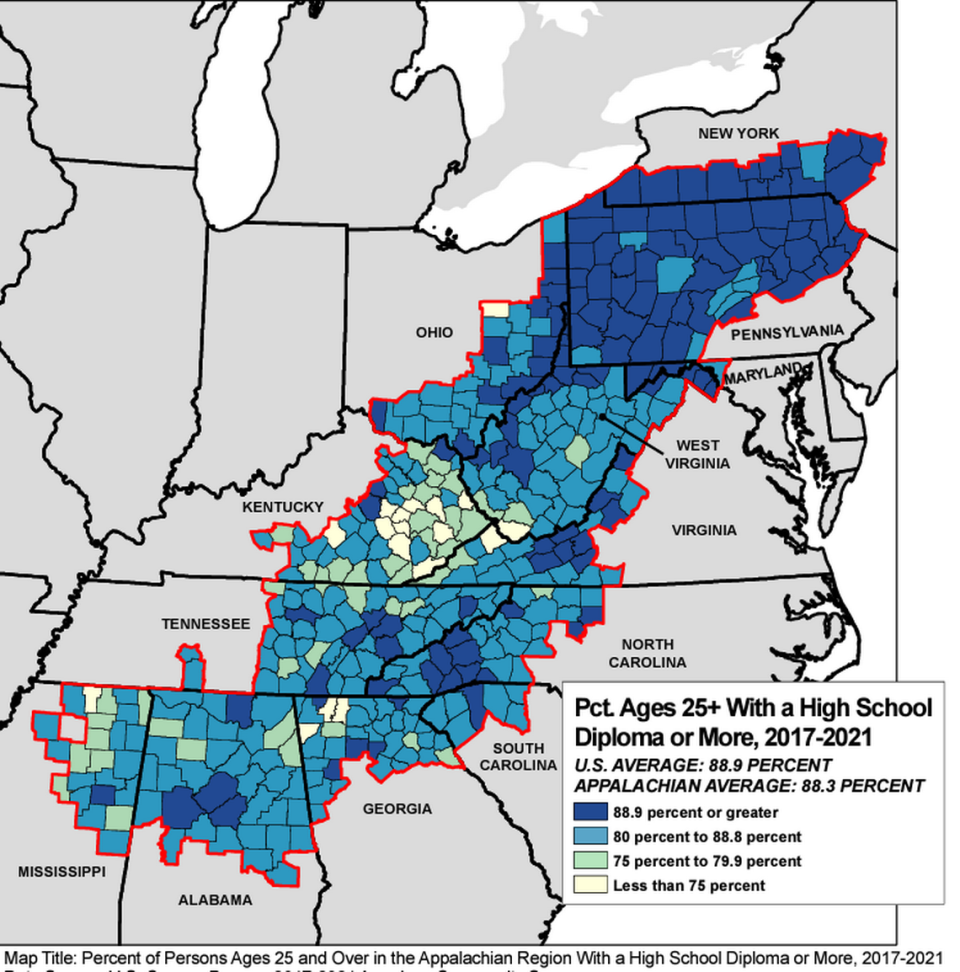
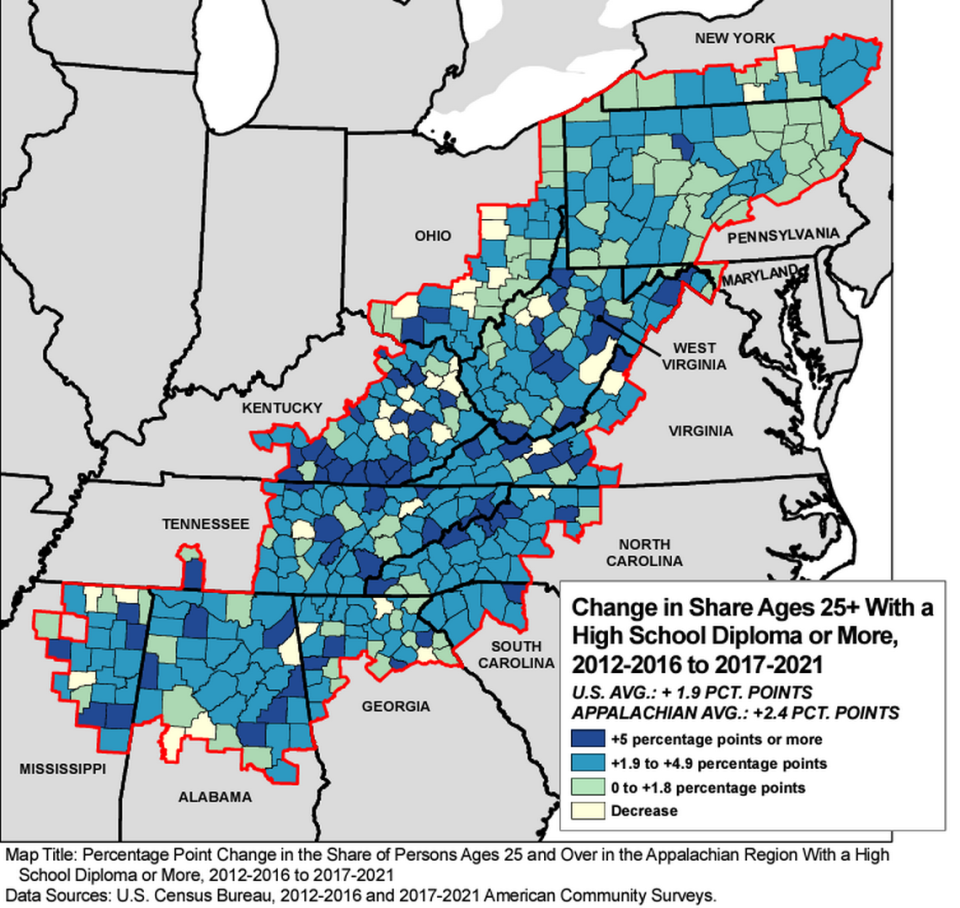
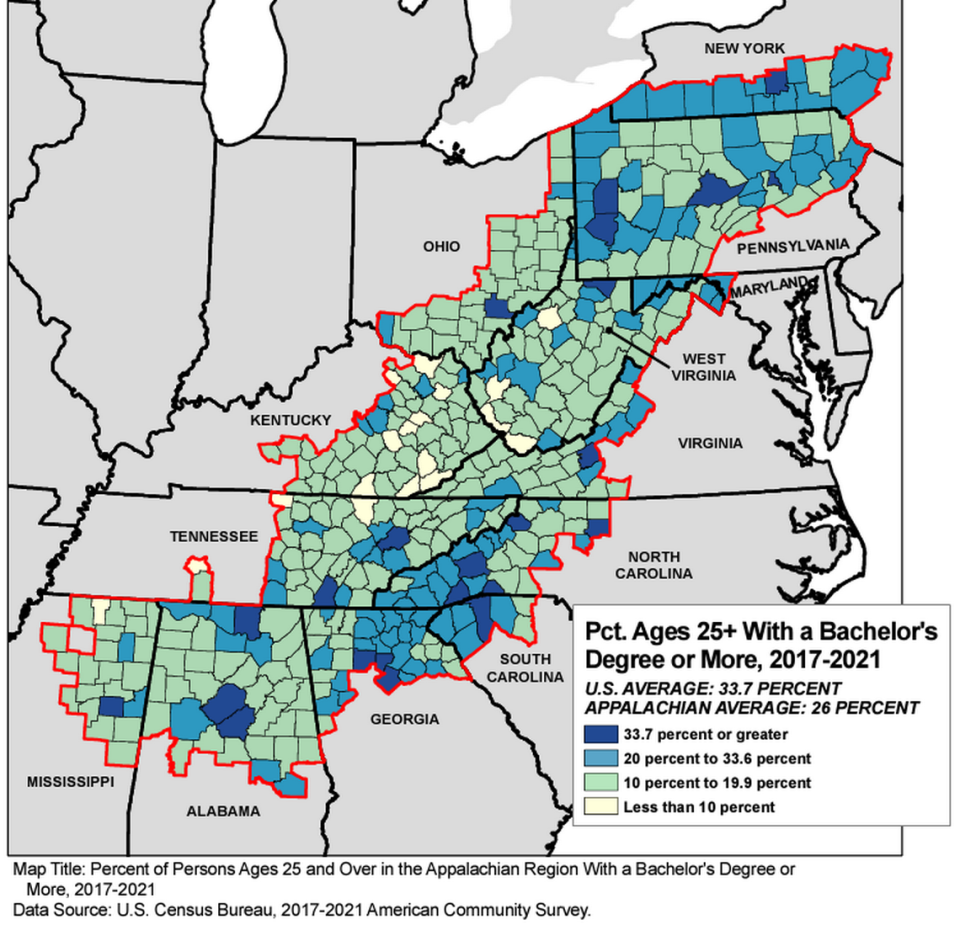

 Yahoo Finance
Yahoo Finance 